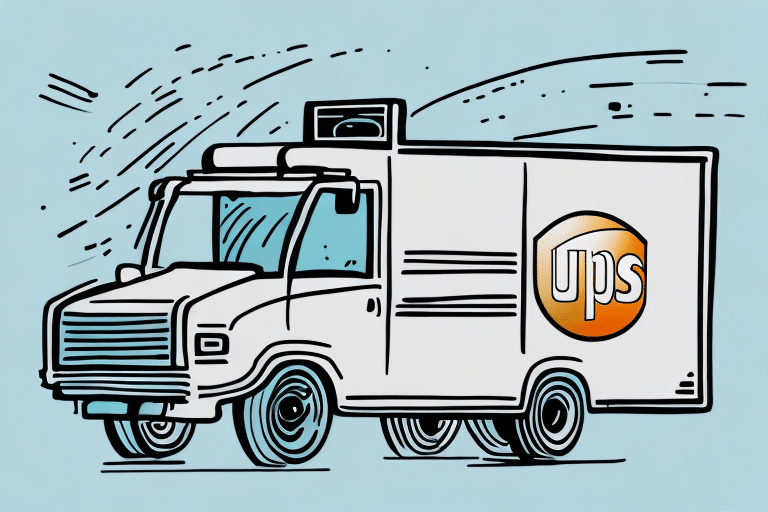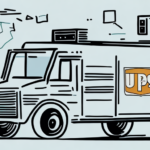Understanding UPS Delivery Area Surcharges
If you're a business owner who ships products or goods using UPS, you're likely familiar with delivery area surcharges. But what exactly are delivery area surcharges, and how do they affect your shipping costs? This article provides an in-depth analysis of UPS delivery area surcharges, including their determination, impact on your bottom line, and strategies to navigate them effectively.
How UPS Determines Delivery Area Surcharges
UPS imposes delivery area surcharges based on several factors, primarily the distance between the delivery address and the nearest UPS facility. These areas are categorized into extended and remote zones:
- Extended Areas: Locations within a certain distance from a UPS facility but require additional time and effort to reach.
- Remote Areas: Locations that are significantly distant from UPS facilities or have limited access via roads or other transportation forms.
The surcharge amount varies depending on the package’s weight, dimensions, and destination. Additionally, factors such as current market conditions and fuel prices can influence these surcharges.
According to UPS's official guidelines, surcharges are periodically updated to reflect changes in operational costs. For the most accurate and up-to-date information, businesses should refer to the UPS Surcharge Guidelines.
The Impact of Delivery Area Surcharges on Shipping Costs
Delivery area surcharges can significantly influence your shipping expenses, especially for businesses that frequently ship to extended or remote locations. Here’s how:
- Increased Shipping Costs: Surcharges can range from a few dollars to several hundred dollars per package, depending on the location and package specifications.
- Budget Constraints: For small businesses with tight shipping budgets, these additional costs can impede growth and profitability.
According to a 2023 UPS industry report, businesses shipping to remote areas may incur up to a 25% increase in shipping costs due to surcharges.
Strategies to Minimize Delivery Area Surcharges
To mitigate the impact of UPS delivery area surcharges on your business, consider the following strategies:
Optimize Shipping Routes
- Consolidate Shipments: Combine multiple packages into a single shipment to reduce the number of surcharges.
- Third-Party Logistics Providers: Partner with logistics experts who can help streamline your shipping processes and negotiate better rates.
Explore Alternative Shipping Methods
- Use Different Carriers: Consider carriers like FedEx or DHL, which may offer more favorable surcharge structures for certain areas.
- Ground Shipping: Opt for ground shipping instead of air shipping, as it typically incurs lower surcharges.
Negotiate with UPS
If your business has a high shipping volume, you may have leverage to negotiate reduced surcharge rates or waive certain fees. Building a strong relationship with your UPS account representative can open opportunities for customized shipping agreements.
Alternatives to UPS for High-Demand Areas
While UPS is a dominant player in the shipping industry, there are alternatives that might better suit your business needs, especially when shipping to high-demand or remote areas:
Regional Carriers
Regional carriers often have specialized knowledge and infrastructure tailored to specific areas, potentially offering more efficient and cost-effective delivery options.
Courier and Freight Forwarders
Using courier services or freight forwarders can provide end-to-end shipping solutions, including consolidation of shipments, better rates, and optimized delivery routes.
Best Practices for Managing Shipping Costs
Effective management of shipping costs involves a comprehensive approach:
- Analyze Shipping Data: Regularly review your shipping patterns to identify areas where surcharges are highest.
- Develop a Shipping Strategy: Tailor your shipping operations to minimize surcharges by optimizing package sizes, weights, and delivery routes.
- Partner with Logistics Experts: Collaborate with knowledgeable logistics providers to enhance your shipping efficiency and negotiate better rates.
According to the Shipper's Resource Guide, businesses that actively manage their shipping strategies can reduce costs by up to 15%.
Real-World Case Studies
Examining how other businesses handle UPS delivery area surcharges can provide valuable insights:
Case Study 1: Consolidated Shipments
A small e-commerce business reduced its surcharges by consolidating multiple shipments into fewer, larger packages. This approach decreased the overall number of surcharges incurred, resulting in a 20% reduction in shipping costs.
Case Study 2: Negotiated Rates
A high-volume retailer successfully negotiated lower surcharge rates with UPS by demonstrating their substantial shipping volume to remote areas. This negotiation led to a 10% decrease in surcharge fees.
These examples highlight the importance of strategic shipping management and proactive negotiations in reducing shipping costs.
Staying Updated with UPS Surcharge Changes
UPS periodically updates its surcharge rates and criteria based on industry trends, fuel prices, and operational costs. To ensure your business remains cost-effective:
- Regularly Review UPS Updates: Stay informed by checking the UPS Surcharge Page for the latest information.
- Adjust Your Shipping Strategy: Adapt your shipping practices in response to surcharge changes to maintain cost efficiency.
By staying informed and adaptable, your business can effectively manage and minimize the impact of UPS delivery area surcharges.




















